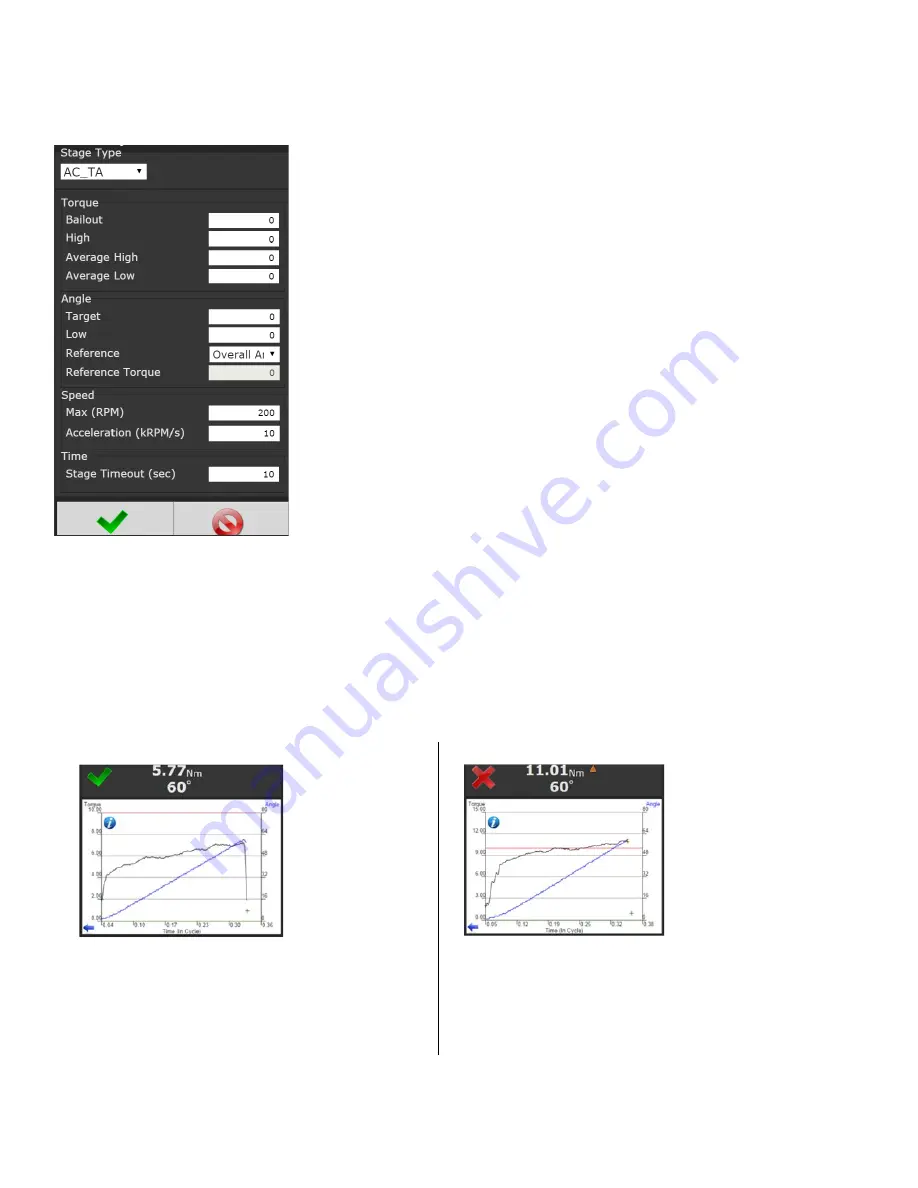
Page
27
of
84
4.2.5.10 AC_TA Angle Control Torque Averaging Stage
Control Strategy that is helpful in applications where the rotational
resistance measured can produce a pass or fail reading. This will
help in gauging rolling resistance of a given part and aid in
detecting latent failures in rotating assemblies.
Torque Bailout:
Determines when to stop the tool based on torque
value during any Angle. Torque Bailout value should be equal or
greater than High Torque.
Torque High:
Upper control limit of the rundown.
Average High
The average high torque of the rundown.
Average Low
The average low torque of the rundown.
Angle Target:
Angle target desired.
Angle Low:
Minimum allowed angle rotation in degrees.
Reference:
(drop down menu)
Overall Angle:
Angle is measured starting from from
lever/trigger pull.
In-cycle Angle:
Angle is measured from In-Cycle torque
value(Determined in PSet screen).
Stage Angle:
Angle is measured from Reference Torque.
Reference Torque:
If Stage Angle is selected, this will be the Torque
start point at which angle is monitored.
Max (RPM):
Tool Output speed target.
Acceleration (kRPM/s):
How quickly the tool will change speed. The
lower the value the slower the accleration (see glossary of terms for in
depth description).
Stage Timeout (sec):
Maximum allowable time in this stage. If time is
exceeded, the tool will stop and the Rundown will be terminated.
Pass
Fail
Average Torque falls within
Avg. Torque
limits.
Reported torque is the average of the torque
measured during the
AC_TA Stage.
Notice that final torque is greater than the
Avg.
Torque High
limit.
Average Torque greater than
Avg. Torque High
limit.
Reported torque is the average of the torque
measured during the
AcTa Stage.
















































